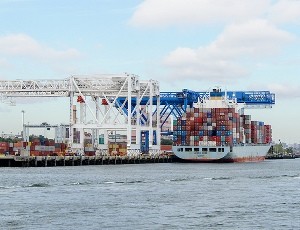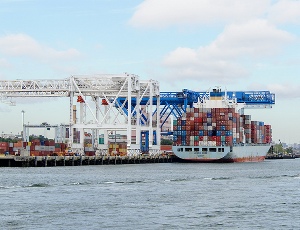 The logistics sector appears even more affected in September by current events than it was in August, and has taken an even darker outlook for the next six months, according to the latest Stifel Logistics Confidence Index.
The logistics sector appears even more affected in September by current events than it was in August, and has taken an even darker outlook for the next six months, according to the latest Stifel Logistics Confidence Index.
The index reported a fourth consecutive month of decline in September even as it hinted of more troubling findings behind the figures.
“While the index, at 51.5, remains above the neutral 50 mark, times may be gloomier than the numbers alone suggest,” it said. It added that not only has the index reached its lowest point in some 26 months, it also recorded its fastest pace of decline since June 2014, a 2.6 point loss against the 54.1 recorded in August.
September’s most concerning figure comes from the Logistics Situation Index—at 49.4, the index indicated an erosion in the confidence of freight forwarders in the present circumstances, likely based on a combination of China’s slowing economy, general weakness in emerging markets, and tepid global trade.
Perhaps more pressing on the agenda of the industry, though, will be the six-month outlook—a fall of 3.3 points brought the Logistics Expectations Index to 53.6, representing a loss of 9.6 index points in the last four months alone.
“Indeed, the picture painted by the future-gazing Index gets even worse when expectations for the sea freight market are examined,” the report remarked.
The loss of 3.5 index points in a month put the Logistics Expectations Index for sea freight at 52.9, a mark some 12.2 points below the confidence levels of September 2014.
“Combined with a Logistics Situation Index for sea freight of 49.8, it is perhaps little wonder that executives at Maersk Group’s Capital Markets Day suggested that container lines were ‘operating in an unhealthy industry,’” said Stifel.
For airfreight, volumes fell in July, down marginally by 0.6% when measured by freight tonne kilometers, according to the International Air Transport Association. Weak global growth, a turbulent few weeks in the Chinese economy, and general weakness in emerging economies were blamed for the fall. The results of this put all but one trade lane below the neutral 50 mark for September.
Europe-to-Asia was hurt the most as it fell 3.7 points to 44.7, while the reverse lane lost 3.1 points as it fell to 47.5. The U.S.-to-Europe lane also finished below the 50 mark, at 49.6, although this represented a 1.3 point gain over August. Europe-to-U.S. remained seemingly healthy, at 54.4 for September, although this was 3.4 points lower than the 57.8 mark seen in August.
Overall, at 48.9, the Logistics Situation Index for airfreight was 2.4 points down on the previous month, and 4.1 points down compared with September 2014.
The Logistics Expectation Index for airfreight saw even more rapid declines, shedding 3.1 points compared with August to finish at 54.2 as all lanes saw falling confidence. Losing the most was the Asia-Europe lane which declined 4.4 points to 53.8, while the Europe-Asia lane saw a 4-point dip to 51.8. A 2.3-point decline meant the U.S.-Europe lane ended September at 52.8, while a loss of 1.8 points had the Europe-to-U.S. lane ending the month at 58.3.
For sea freight, on the other hand, a 1.4-point fall in the Logistics Situation Index saw the index dip back below the neutral 50 mark after two months of expansion. Just a single lane saw growing confidence in September, the U.S.-to-Europe lane which rose 0.4 points to 48.2. The Europe-Asia and Asia-Europe lanes both saw a 2.3-point decline to 48.7 and 54.1, respectively. The Europe-to-U.S. lane fell 0.9 points to 47.6.
All lanes saw declines in September’s Logistics Expectations Index for sea freight, as the overall index was down 3.5 points to 52.9. The Asia-Europe lane fell 5.3 points to 52.8, while the Europe-Asia lane also lost 5.3 points, ending at 52.5. A 2.2-point fall dragged the Europe-to-U.S. lane down to 55.9, while a loss of 1 point meant the U.S.-to-Europe lane recorded a mark of 50.1 in September.
Photo: Eric Kilby





